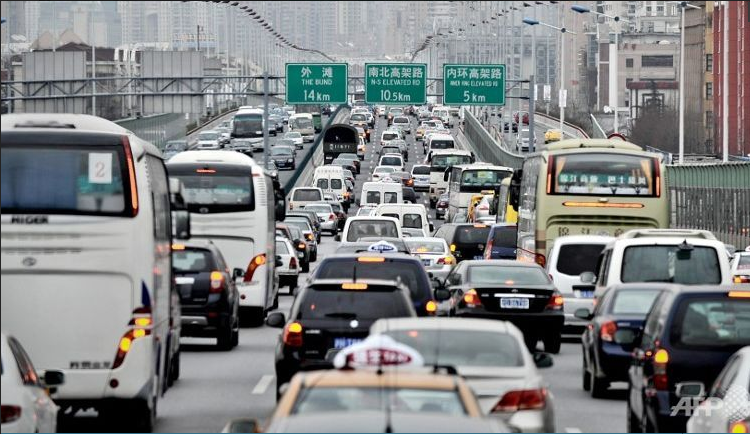Most climate scientists have recognized that greenhouse gases, of which CO2 is part, contribute to global warming.
The Paris event, which saw hundreds of scientists gather to discuss possible solutions to stem the effects of climate change, comes months before the UN Conference on Climate Change at year-end.
Several Asian countries have already submitted their voluntary targets to the UN, including Japan, Singapore and South Korea.
Singapore has committed to reducing its emissions per dollar GDP by 36 per cent from 2005 levels by 2030. South Korea, among the world's top 10 emitters, looks to reduce emissions by 37 per cent from business-as-usual levels, while Japan intends to cut emissions by 26 per cent from 2013 levels by 2030.
China, one of the world’s biggest emitters, announced in June it aims to cut greenhouse gas emissions per unit of gross domestic product by 60 to 65 per cent from 2005 levels by 2030.
"I think Asia is going to make or break climate change,” said Saleemui Huq, senior fellow at International Institute for Environment and Development. “Where Asia goes the rest of the world goes. It’s not going to be led by the US it will be led by China and India. If they decide to solve the problem, we will have a solution. If they decide not to solve the problem then we will not have a solution."
The upcoming annual Conference of Parties, or COP21, will see the global community gather in Paris to reach an agreement on how to contain and reduce carbon dioxide emissions.
This comes six years after the failed Copenhagen summit that recognized the scientific case for keeping global warming temperature increases to no more than 2°C, but notoriously saw countries unable to ink a deal on how to achieve that goal collectively.
Hopes for a breakthrough agreement to limit rising world CO2 emissions are back on the table this year.
According to the International Energy Agency’s 2013 Southeast Asia Energy Outlook, the area's total energy demand is expected to rise by more than 80 per cent by 2035 to support a near tripling of the region's economy.
Asia’s two powerhouses China and India, the world’s top CO2 emitters, are also seeing growth.
While the European Union has traditionally been at the forefront of setting energy and climate targets, the way in which Asian powerhouses develop their energy sectors in the coming decades will play a big role in the global community in the near future.
But experts say reducing emissions remains a challenge for countries with high rates of poverty, where there is often a heavy reliance on the cheapest and most polluting fossil fuel - coal.
It is also these countries in Asia that are the most vulnerable to the effects of climate change, including droughts, floods and typhoons.
"What is needed is to transform the energy system to be based on renewable energy,” said Shobhakar Dhakal, an associate professor working in the Energy field of study at the Asian Institute of Technology. “We do have a lot of prospects on the renewable side. This should be made mainstream."
The region's increasing contribution to global CO2 emissions and its vulnerability to the effects of climate change make it essential that Asia’s economies pull their weight at the negotiating table in Paris later this year.
Source: Channel News Asia | 02 August 2015














